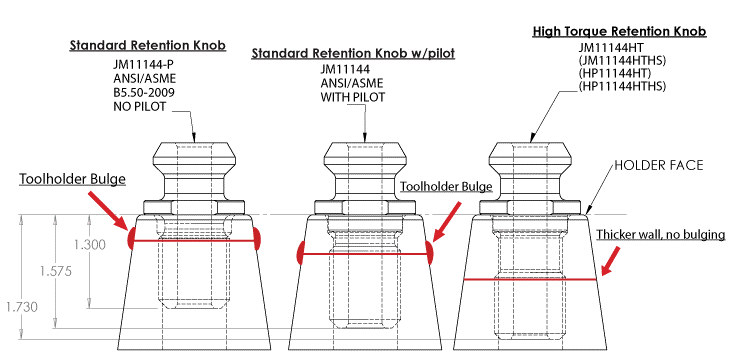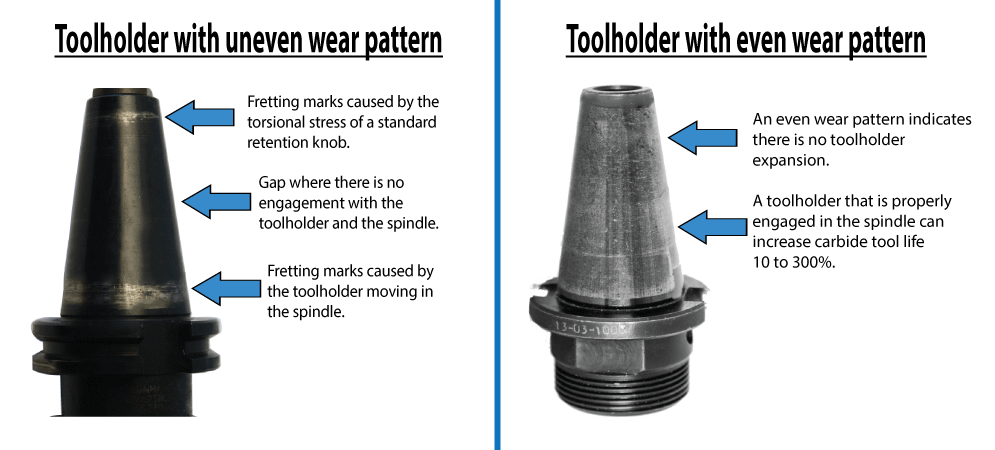At Turning Concepts we know how to get you the most production for your shop floor. Get to know JM Performance’s High Torque Retention Knobs, made with longer threads are stronger.
Retention Knobs with longer threads are stronger. Stronger knobs means less vibration or longer insert life.
What is a high torque retention knob?
JM’s High Torque Retention Knobs have a unique, newly-patented design that prevents toolholder distortion. When a toolholder is distorted, it will not fit properly in the spindle. An expanded toolholder is free to move in the spindle causing excessive harmonics, damage to the toolholder and spindle, and poor tool life.
High Torque Retention Knobs are longer than a traditional retention knob, but share the same head dimensions. The additional length also increases durability of the retention knob; a standard knob has less shank elasticity and will fatigue faster. The extra length of the knob is added to the shank of the knob below the flange. This relief, along with a precision pilot and controlled threads, allows for the stress to be distributed into a deeper cross-section of the toolholder where it has more resistance.

Advantages:
- Reduces Harmonics
- Increased Taper Contact
- Improved Set-Up Times
- Increased Rigidity
- Balanced by Design
- Works with any new or used toolholder made to industry specifications.
Signs of a Deformed Toolholder:
When inspecting a toolholder that has been in a machine spindle, examine it for fretting rings around the small and large end of the taper. The fretting ring that is found on the small end of the taper is formed from the retention knob expanding the toolholder. The fretting ring on the large end of the toolholder below the Gage Line is from the toolholder moving in the spindle.
When the toolholder is expanded, it is free to move in the spindle and is riding on the two high contact points. The rest of the toolholder is making limited contact with the spindle. When a High Torque Retention Knob is placed in the toolholder it prevents the toolholder from expanding. A holder that is not expanded will properly seat with the spindle.
A visual inspection of the toolholder will show that a toolholder that is properly seated will have an even wear pattern starting at the gage line and progress up to 70-80% towards the small end of the taper.

Want to learn more? Call our team of exerts today at (704) 849-9209 and see how we can help your business.
